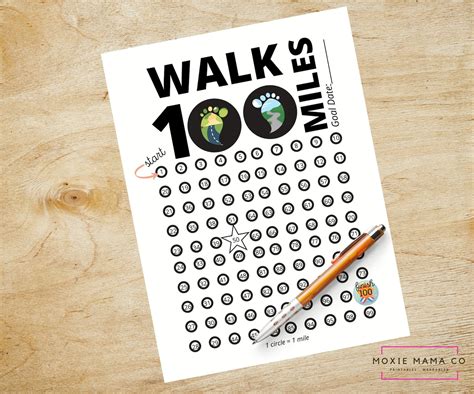Walking 100 Miles: Time Commitment & Planning
Walking 100 miles is a significant undertaking, a testament to endurance and dedication. Whether you're training for a long-distance event, embarking on a personal challenge, or simply aiming for a substantial increase in your daily activity, meticulous planning is crucial. This article will delve into the time commitment involved and provide a comprehensive guide to planning your 100-mile walk.
How Long Does it Take to Walk 100 Miles?
The time required to walk 100 miles is highly variable and depends on several key factors:
-
Daily mileage: Are you aiming for a marathon-like endeavor, covering a significant distance each day, or a more leisurely pace spread across several weeks or even months? A daily goal of 10 miles will take approximately 10 days, while a more ambitious 20 miles per day would reduce that to 5 days. A gentler pace of 5 miles a day would stretch the journey to 20 days.
-
Walking speed: Your average walking speed directly impacts the overall time. A brisk pace of 3-4 mph will be considerably faster than a leisurely stroll of 2 mph.
-
Terrain and elevation: Flat, paved surfaces are much quicker than hilly or uneven trails. Significant elevation gain and loss will drastically increase the time needed, requiring more rest and potentially altering your daily mileage goals.
-
Rest and recovery: Incorporating rest days is crucial to prevent injury and burnout. These rest days need to be factored into your overall timeline. Even short breaks during the day are beneficial.
-
Weather conditions: Extreme heat, cold, rain, or snow can significantly slow your progress and necessitate adjustments to your schedule.
How to Plan Your 100-Mile Walk
Planning your 100-mile walk is key to success. This requires a phased approach:
1. Setting Realistic Goals:
-
Determine your daily mileage: Be honest about your current fitness level and experience. Start with a manageable distance and gradually increase it over time. Don't jump into 20 miles a day if you're currently only walking a couple of miles.
-
Choose a timeline: Based on your chosen daily mileage and incorporating rest days, create a realistic timeline.
-
Select your route: Consider the terrain, accessibility, safety, and potential for resupply along your chosen path. Map your route carefully, including potential overnight stays if needed.
2. Training and Preparation:
-
Gradual increase in mileage: Avoid sudden jumps in distance. Gradually increase your daily mileage to build endurance and prevent injury.
-
Strength training: Incorporate strength training exercises to build leg and core strength.
-
Proper footwear and gear: Invest in comfortable, well-fitting walking shoes and appropriate clothing for all weather conditions. Don't forget essential gear like a backpack, water bottles, sunscreen, and a first-aid kit.
-
Practice walking with your gear: Get used to carrying your backpack with the weight you'll be carrying on your journey.
3. Nutrition and Hydration:
-
Fuel your body: Consume a balanced diet with plenty of carbohydrates, protein, and healthy fats to sustain your energy levels.
-
Stay hydrated: Drink plenty of water throughout your walk, especially in hot weather.
4. Safety Considerations:
-
Inform someone of your plans: Let a friend or family member know your route, schedule, and expected return time.
-
Carry a communication device: A cell phone is crucial, but consider a personal locator beacon (PLB) for remote areas.
-
Be aware of your surroundings: Pay attention to weather conditions, wildlife, and potential hazards along your route.
5. Monitoring Progress and Adjustments:
-
Track your progress: Keep a record of your daily mileage, rest days, and any challenges encountered.
-
Listen to your body: Don't push through pain. Adjust your plans if necessary to avoid injury.
Frequently Asked Questions (PAA)
How many days will it take to walk 100 miles? This depends entirely on your daily mileage goal and includes rest days. It could range from 5 days (high mileage) to several weeks (low mileage).
What's the best way to train for a 100-mile walk? Start with a base level of fitness, then gradually increase your daily mileage, incorporating strength training and rest days.
What gear do I need for a 100-mile walk? Essential gear includes comfortable walking shoes, appropriate clothing for various weather conditions, a backpack, water bottles, sunscreen, a first-aid kit, and a communication device.
Is it safe to walk 100 miles alone? Safety is paramount. Inform someone of your plans, carry a communication device, and be aware of your surroundings. Consider walking with a buddy for added safety and support.
How much does a 100-mile walk cost? Costs will depend on your accommodation (if needed), food, gear, and transportation. Budget accordingly.
By carefully planning and preparing, walking 100 miles becomes an achievable and rewarding experience. Remember to prioritize safety, listen to your body, and enjoy the journey!

